Nuclear Power is arguably one of the more divisive topics, however, given the global energy crisis, there’s been a shift in sentiment towards nuclear power, particularly as countries look to diversify away from Russian energy dependence.
But if you ask the average Aussie or Kiwi about their view on nuclear, the initial reaction is often one of fear and uncertainty. But if it is so bad, why are people like Warren Buffet investing so heavily into next generation Nuclear technology?
Uranium Cycle
Uranium is a relatively common material, which is enriched, fabricated into fuel rods that are then used in Nuclear Power Plants.
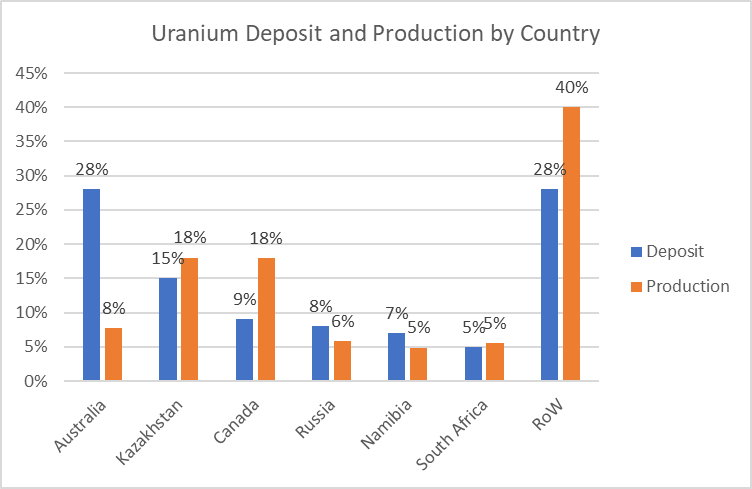
Source: World-nuclear.org
In terms of energy generation, Nuclear accounts for 10% of the world’s electricity and the USA is by far the largest generator, however France is the most reliant, as ~70% of its electricity is generated by nuclear energy.
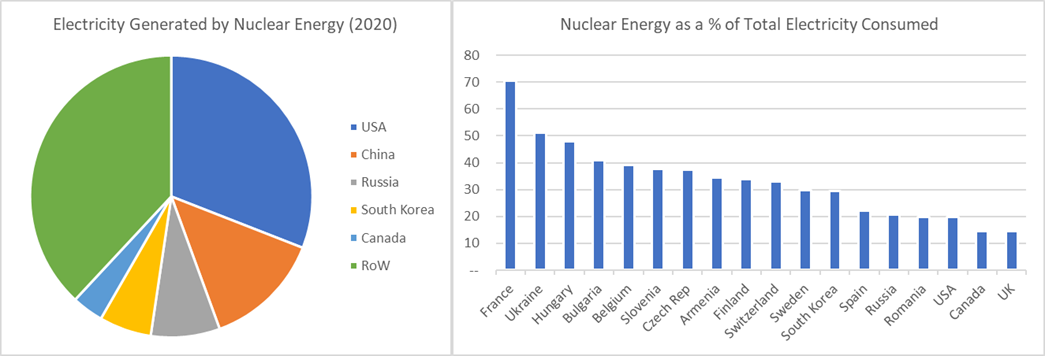
Now where this all gets very interesting is the supply/demand dynamic we are seeing playing out in the uranium sector. Roughly speaking, nuclear reactors consume 180m pounds of yellow cake p.a. but only ~130m/lb p.a. is mined. So how does this work? Well the industry has been in a state of oversupply for years for a myriad of reasons but the key driver really was Fukushima. In an instant, 13% of the worlds demand went down overnight and hence, the market went from being slightly oversupplied to very oversupplied. A lot of mines have been put into care and maintenance and after many years of a highly imbalanced market, we are slowly moving to a net supply deficit.
This shows the supply (bars) relative to the expected demand (line chart)
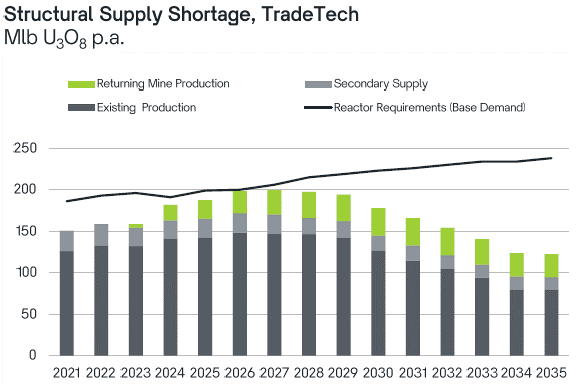
Source: Paladin (PDN.ASX) Presentation
The spot price of Uranium is only just recovering (U308 USD/lb)
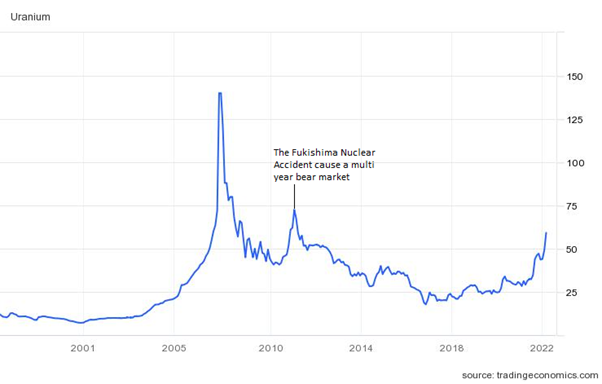
So what are the key benefits of nuclear power?
It has one of the lowest carbon footprints of all energy generation.
- The use of nuclear energy today avoids emissions roughly equivalent to removing one-third of all cars from the world’s roads. Also, despite only accounting for 20% of the USA’s energy, it accounts for 55% of their carbon free power.
Carbon Dioxide Equivalent Emissions per Unit of Electricity

Source: World-nuclear.org
From a generation perspective it’s incredibly efficient and reliable.
- It has a capacity factor of 92.5% which basically means nuclear power plants are producing max power for 92.5% of the time during the year. This is a lot more stable than wind and solar that are subject to weather conditions meaning you can adjust supply in real time.
- Another great stat is that one uranium fuel pallet, about the size of a 50c coin, creates as much energy as 17,000 cubic feet of natural gas, 564 litres of oil and one ton of coal1. Put another way, one kg of natural uranium will yield approx. 20,000 times more energy than one kg of coal.
They can also last for decades once built with some plants in the US having had their life extended to 80 years!
What are the Key Negatives?
Nuclear Waste.
- Although undoubtedly a risk, it has been disproportionately amplified over the years. 97% of the waste produced is low or intermediate in terms of its riskiness. Recycling efforts are increasing and in France, given they reprocess a lot of their fuel, only 0.2% of total waste is considered high level waste.
- Now there is no getting away from the fact that high level waste takes 1,000 to 10,000 years to get back to the same level of radiation as when it was mined, however after 40 years of storage most waste declines in radioactivity to one-thousandth of the level of when it was enriched. In addition, newer technologies are significantly reducing waste produced.
The risk of a nuclear meltdown.
- The Chernobyl meltdown will forever highlight the risk of a complete, uncontainable nuclear meltdown. This led to thousands of deaths and radiation risks still to this day. The 2011 Fukushima meltdown, triggered by the tsunami, has not caused any deaths nor adverse side effects, but the clean-up is estimated to take up to 40 years and radiation was released into the ocean.
- Newer technologies have materially increased the safety of global nuclear reactors and each negative event has seen significant steps forward in the safety of these reactors. Nonetheless there will always be a risk, however large or small, of a meltdown when dealing with nuclear power.
The risk of nuclear waste being weaponised.
- Nuclear waste has never fallen into the wrong hands however as we are seeing in Ukraine, nuclear facilities can become military targets. Its important to note these facilities are designed to withstand bombing and terrorist attacks.
The cost.
- Nuclear is very expensive to build, costing billions up front and taking years to complete construction. The actual operating costs post construction are very low and a lot of research around reducing construction costs is occurring.
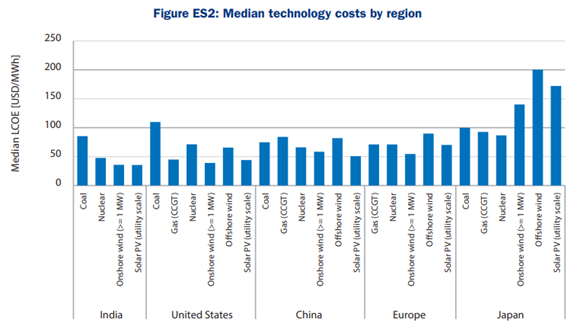
Source: OECD Nuclear Energy Agency
There are plenty of fascinating recent developments in Nuclear, from Bill Gates and Warren Buffet spending billions on a Nuclear reactor in Wyoming, to an ETF called Sprott that’s hoovering up uranium on the spot market, to the EU considering including nuclear in its taxonomy – essentially labelling it as green energy.
Whatever one’s stance on Nuclear; 2021 delivered a new record for the amount of coal burnt globally, highlighting the desperate need for new energy solutions. Hence, alternative energy sources will continue to gather momentum globally.


